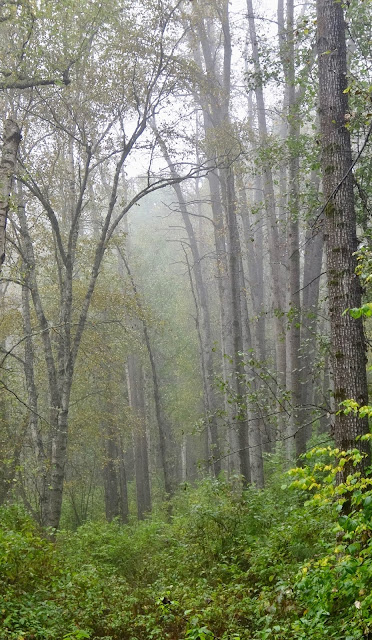Yesterday we needed some potatoes for supper, so I went out to the garden to dig some. I usually plant a variety of potatoes, one variety in each row. I always think I will remember which variety I planted in each row, but I never do. Already this year I had dug some fingerling potatoes, and some reds, so yesterday I thought I would dig in another row to see what I had planted there. I discovered it was the Cariboo potato, which we have nicknamed “Pintos,” because of their pink and yellowish piebald skin.
“Cariboo” is a corruption of caribou, and the term refers to the high plateau in the center of BC. Although the Robson Valley is not in the Cariboo, when I look out of our living room window we see the Cariboo Mountains which mark the eastern boundary of the Cariboo. As you have probably guessed, this potato was named after BC’s Cariboo region, but it did not originate there.
The spud was developed in the early 1960’s at a federal research center in New Brunswick. It was then distributed to experimental potato farmers around Canada to see how it grew in different regions. When it was planted in the Cariboo Region, it did really well and was given the Cariboo name. However, just because it grew well, tasted great, was an excellent keepers, and was disease free, wasn’t enough for the Ministry of Agriculture, they banned the growing of the Cariboo potato in 1976. What horrible thing caused this potato to be banned you ask.
It seems that the potato plant, which grew quite high above ground, clung to its underground tuber more than the federal officials liked. The long potato plant clogged up the mechanical diggers when harvested, so the potato was banned.
It didn’t matter that it was still a great potato for hand harvesting in the home garden and I have never had a problem with it clinging to the rest of the plant, but nevertheless, it was decertified, and not allowed to be sold. The Cariboo potato started to disappear rapidly.
However, Jerry LeBourdais, a rebel farmer in Williams Lake, BC got wind of the banning and it got his dander up. The banning made him want to grow the outlaw spud. He unsuccessfully asked around trying to find some to plant, then in 1984 at a horticultural show in Prince George, John Ryser, one of those people Jerry LeBourdais had asked, came upon some and grabbed “four or five” and gave them to Jerry, who started growing them.
Excuse the pun, but growing the Cariboo potato became and “underground” movement and slowly people shared the variety with other gardeners and the Cariboo spread. Years ago, I was given a few of the Cariboo’s from Pete, our local gardening expert and heritage plant propagator. I planted them, and they did well. I always saved some for planting the next year and they have become one of my favorite potatoes.
Like I have said, I always plant a handful of potato varieties. Some year the reds do well, some year they are a disaster, same with the other varieties. The Cariboo’s seem to do well consistently, although one year I almost lost them. I don’t remember if it was because they didn’t grow well, or if we ate too many and didn’t save some for planting, but the next year I discovered that I had none to plant and I was really upset. I asked Pete, and he didn’t have any either.
Fortunately, a few Cariboo volunteers came up in my garden. I made sure I didn’t eat any, but saved them to plant the following year. Slowly over the following years, their numbers increased, and now I have enough for two rows.
I was happy yesterday when I broke into the row to discover that they had produced some nice sized tubers, despite all of the rain which waterlogged my garden.
I hope the variety continues its spread, especially in the BC Interior.




































